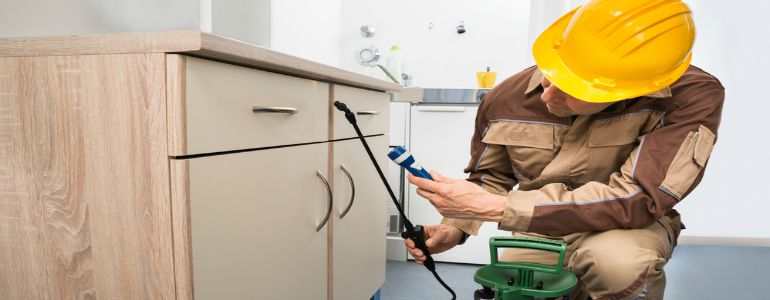Dependable Pest Control Washington DC: Secure Your Home and Organization!
Dependable Pest Control Washington DC: Secure Your Home and Organization!
Blog Article
Specialist Parasite Control Techniques for Long-Term Results
In the realm of insect control, achieving continual efficiency and long-lasting results calls for a meticulous method that transcends plain extermination. Expert parasite control strategies encapsulate a comprehensive strategy that starts with a complete evaluation and evaluation, complied with by exact bug identification to understand their actions patterns. The application of Integrated Pest Management (IPM) principles, combined with eco-conscious treatments, develops the cornerstone of lasting insect elimination. However, real examination hinges on the ongoing monitoring and maintenance of the dealt with locations, ensuring a pest-free atmosphere for the near future. By delving into the ins and outs of these techniques, a much deeper understanding of expert bug control techniques for withstanding outcomes emerges.
Examination and Evaluation
Upon entering a residential property for insect control solutions, the preliminary step is a complete evaluation and assessment to identify the degree of the problem and establish the most effective therapy strategy. Professional bug control service technicians are trained to diligently examine the facilities, seeking indicators of bug task such as droppings, nibble marks, nests, or any architectural damages. They will likewise examine the conditions that might be drawing in parasites, such as food sources, water leakages, or access points.

Bug Recognition and Habits

In addition, comprehending the habits of the determined pest is essential to carrying out efficient control procedures. Knowing where pests nest, what they feed on, and their task patterns can original site aid pest control professionals devise approaches to remove them efficiently.
Integrated Insect Management (IPM)
Integrated Bug Management (IPM) strategies integrate numerous methods to regulate and avoid parasite invasions in a sustainable and environmentally pleasant fashion. bed bug exterminator. By integrating approaches such as organic control, habitat adjustment, alteration of cultural techniques, and making use of resistant varieties, IPM intends to reduce using chemical pesticides
Among the crucial concepts of IPM is the focus on prevention. This positive method involves tracking bug populations frequently to identify any kind of prospective concerns before they escalate. By recognizing insect troubles early, pest control actions control pest services can be executed quickly and successfully.
In addition, IPM advertises making use of non-toxic parasite control methods whenever feasible. This can include using all-natural predators of the pests, presenting helpful bugs, or making use of pheromones to interfere with breeding patterns. By lowering dependence on chemical pesticides, IPM not just secures the environment yet additionally aids preserve an equilibrium in the community.
Environmentally-Friendly Therapies
Executing eco-conscious strategies in bug control procedures can properly resolve invasions while focusing on environmental sustainability. Environmentally-friendly treatments focus on reducing the influence of pest control techniques on ecological communities, non-target microorganisms, and human wellness.
Another trick element of environmentally-friendly treatments is using organic and naturally degradable products that break down swiftly without leaving damaging deposits in the atmosphere. Agricultural insecticides stemmed from plants like chrysanthemums or neem offer reliable bug control while presenting minimal danger to non-target species. Furthermore, employing techniques like heat treatments or pheromone catches can target certain parasites with precision, minimizing the general environmental effect of parasite control methods.
Recurring Tracking and Maintenance
Normal inspections by trained professionals are required to determine any kind of indicators of bug activity, analyze the performance of previous treatments, and make adjustments to the bug control plan as needed. By monitoring pest populaces over time, insect control specialists can track trends, anticipate prospective issues, and execute precautionary actions to reduce the danger of future invasions.
Along with monitoring, maintenance practices are crucial for long-term pest control success. This consists of carrying out appropriate cleanliness steps to remove prospective food and water sources for insects, securing off entrance indicate protect against parasites from getting in the facilities, and addressing any type of architectural problems that could facilitate pest invasions (bed bug treatment). By incorporating continuous surveillance and upkeep into an incorporated bug monitoring method, organizations can make certain a pest-free environment and secure their building against costly damage and wellness dangers
Final Thought
Finally, utilizing expert bug control techniques such as complete inspection and evaluation, accurate bug identification important link and understanding of their actions, incorporated pest administration methods, environmentally-friendly treatments, and ongoing surveillance and maintenance are vital for accomplishing lasting cause insect control. By carrying out these techniques, people can effectively manage parasite problems and maintain a pest-free environment in a sustainable manner.
Report this page